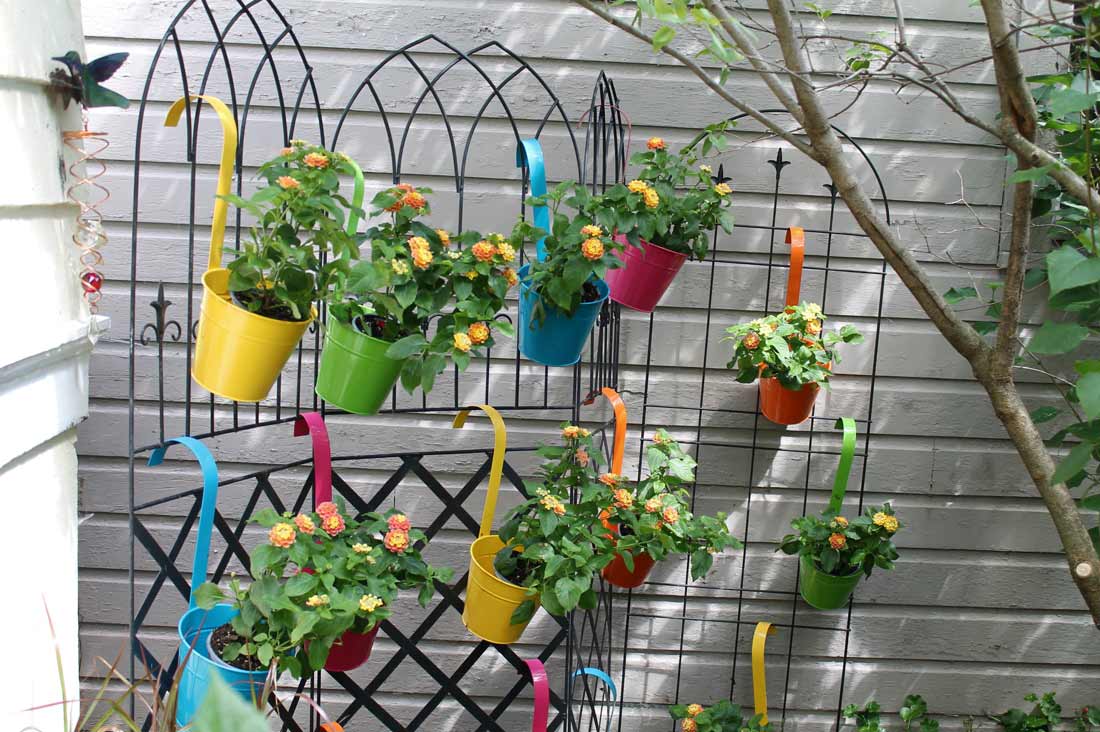6 Ways to Save Money on Container Gardening
Looking to save some money while working on your outdoor garden containers? Read these 6 tips to create beautiful upcycled garden containers.
Those flower pots that looked so good in May and June often turn ratty when drier weather and the season's hottest heat show up in July and August.
Flowers in pots are more prone to summer stresses than in-ground plantings because:
1.) they're surrounded by less soil volume, and
2.) they dry out quicker because, being above ground, the soil is more exposed to air.
One of the best ways to keep flower pots looking good all season is to start with big pots (note to self for next year if your pots are small). More soil means less drying and more space for root growth. In contrast, the smaller the pot, the more often flowers will need water – especially in mid-summer during hot, sunny, breezy spells.

George Weigel
Even with larger pots, check the moisture status of your pots at least daily. The container’s weight will be noticeably lighter if the soil is dry, and the soil will feel dry if you stick your finger a few inches deep. When determined the pots are dry, soak the container until water comes out of the drainage holes in the bottom.
Lack of water is the No. 1 reason why flower pots fail in summer. Remember: if your flowers are wilting, the time to water was yesterday.
Another main reason flower pots go downhill in summer is the lack of nutrients. As flowers grow, they need more nutrition, often using most of the natural nutrients and fertilizer that was in the potting mix. This means that flowers depend on you to give them the fertilizer they need to reach and maintain peak bloom.

George Weigel
It’s not unusual for some flowers to dominate others by mid-summer. If that happens, snip back any overly long growth. Snipping off spent flower heads also keeps the plants neater and encourages continuing bloom.
Occasionally, bugs chew leaves or kill stems. Monitor for signs of those and treat accordingly, depending on which bug is present and the severity of the problem.
And finally, if a plant dies, it may be best to pull it. It is better for neighboring plants as it will allow them to absorb the extra nutrients that were previously being consumed by the dead plant. You also then have an opportunity to explore and see if there is a new plant that you may want to add to your space.